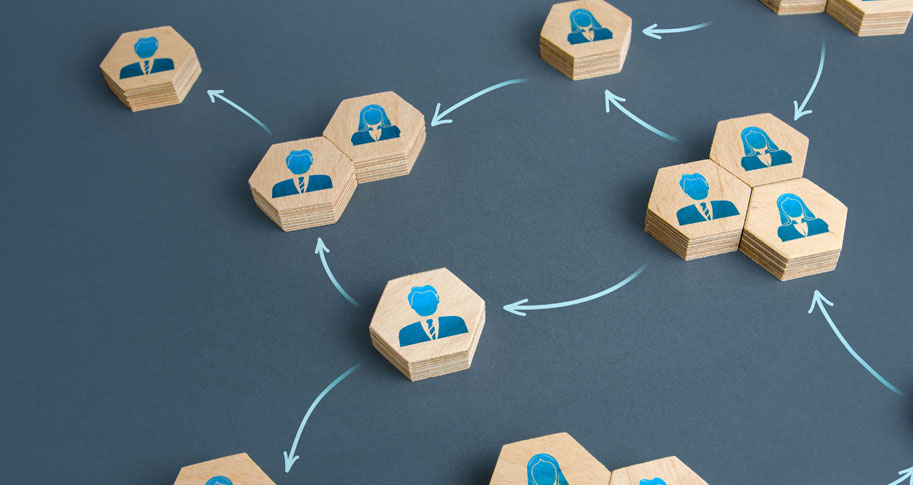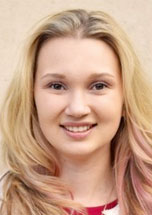
One man took his fishing boat through the flooded streets of New Orleans to rescue folks stranded in the days after
Katrina. Communities fought to reunite pets and owners after the historic Camp Fire in 2017. A local Kroger is donating supplies to Kentucky first responders and helping the Army Corps of Engineers
clean the waterways as the state still recovers from its severe summer flooding.
Yet despite the praise these heroic actions receive amid disaster, researchers have
paid little attention to risk-taking and performance outcomes during humanitarian efforts, according to
University of Arkansas professor Iana Shaheen. Similarly, researchers have not yet studied the differences in risk tolerance that
humanitarian organizations exhibit during such events.
To better understand these dynamics, Shaheen and her coauthors, Arash Azadegan and Samuel Roscoe, interviewed first responders and volunteers from recent, sudden-onset natural disaster
relief efforts. The international team of researchers found that risk-taking behavior
differs between the four types of relief organizations: established, expanding, extending,
and emergent.
As they describe in their article, Who Takes Risks? A Framework on Organizational Risk-Taking During Sudden-Onset Disasters, researchers found that while established organizations like government departments
are generally risk averse, organizations that interact more directly with victims are willing to take on a little
more risk. Extending (e.g., homeless shelters) and expanding organizations (e.g., household
name NGOs) take on risk inversely: expanding organizations will take on more risk
over time and vice versa as relief and fundraising enters different phases. Emergent
organizations tend to take the most risks, but the researchers show that even that
varies depending on the type of organization it is.
Shaheen, Azadegan, and Roscoe’s model intends to help future research understand and
predict the risk-taking behavior of humanitarian organizations during sudden-onset
disaster. Moreover, their work certainly challenges us to consider how changing events
should alter our definitions of success.
Organizations and Their Risk Tolerance
Following earlier literature, Shaheen, Azadegan, and Roscoe identified four types of relief organizations. They
differ on two axes: the age of their structures and the regularity of their tasks.
For example, established organizations like FEMA or the Army Corps of Engineers have
preestablished structures and during disasters they follow preplanned protocol to
meet their organizational goals. On the other hand, emergent organizations, take on
new tasks unlike their typical daily business, and they often build their relief structures
as they need them, like the United Methodist Church of Aransas Pass, which operated
as a field hospital in the wake of Hurricane Celia 50 years ago.
Due to their bureaucratic processes, established organizations tend to take on the
least amount of risk during sudden onset disasters. Indeed, the researchers note that
staff members following standard procedures is associated with the success of established
organizations. During interviews, some established organization managers acknowledged
their actions were “restrained,” even saying they’d prefer their activities to be
described as “sluggish” so long as they were accomplished properly.
Many established organizations, such as utility companies and governmental agencies,
repair infrastructure failures in the wake of disaster. Shaheen, Azadegan, and Roscoe
argue that, in general, established organizations are risk averse because they do
not tend to interact directly with victims. The rebuilding process will necessarily
take weeks or months to complete, and it needs to be done right, both to be in accordance
with regulations and to hopefully prevent the same failures during future disasters.
These organizations will be assisting communities in the long term, so they need to
conserve their resources.
But when an established organization does interact with disaster victims, like police and fire departments, the researchers
found first responders in these organizations are willing to take on some risk. They
only do so, however, if they can minimize friction and “stay in their lane,” as one
sheriff said.
On the other end of the spectrum and less restrained by bureaucracy and regulations,
emergent organizations often feel like other organizations and institutions do not
act fast enough to assist victims. These organizations tend to organically form from
the communities that were damaged by the disasters. The researchers found that these
volunteer organizations were most “influenced by a strong belief in helping victims
and minimizing their suffering.” Accordingly, they are willing to risk their lives
and frustrate established NGOs in order to quickly respond to acute problems caused
by disasters.
The researchers label two subtypes among emergent organizations, social- and enterprise-based.
Shaheen, Azadegan and Roscoe saw a higher degree of caution among enterprise-based
groups, such as company volunteer groups. While both kinds of emergent organizations
are motivated by the same desire to help their communities, the researchers suggest
enterprise-based groups may still restrain themselves based on indirect organizational
protocol from their day-to-day business.
Extending and expanding organizations sit somewhere in between these two extremes.
Expanding organizations are the primary NGOs that participate in disaster relief,
such as the Red Cross or Doctors Without Borders. They have regular tasks they bring
to the disaster zone, but they must establish new structures as they come into newly
effected regions. Extending organizations already serve some humanitarian purpose
in their communities, like food banks and shelters, but in times of crisis, they must
take on new tasks to serve their communities.
These organizations respond to risk in exactly opposite ways. The researchers attributed
the inverse relationship that these organizations have with risk to the constraints
of fundraising. For example, extending organizations take on risk at the onset of
a disaster, often to drum up donations and interest in their standard cause. As relief
efforts go on, though, they become more risk averse. As one operating officer explained
in their interview, “urgent needs were met,” so there was less of a time pressure
to address lingering problems.
Shaheen, Azadegan, and Roscoe explain that extending organizations see a lot of benefit
in taking risks to improve their reputations and raise the media profile of their
causes. As relief efforts go on, however, the organizations receive diminishing returns
for their risk-taking behavior.In contrast, expanding organizations come into disaster
zones risk averse to maintain existing donor relationships. Social media and news
coverage is intense in the immediate aftermath of a disaster, so expanding organizations
avoid unnecessary risk that might harm their reputation. But after the initial flurry
of interest, directors say that the donations dry up, and their organizations need
to be creative to find new resources as relief goes on. Indeed, risk-taking can attract
donors back and improve the organization’s recognition after outside interest and
engagement in disaster relief has waned.
Changing Measures of Success
The researchers applied the Triple-A model (agility, adaptability, and alignment) to assess the outcomes of these organizations
against their risk-taking. While performance is generally measured by cost, quality, delivery, and flexibility (CQDF), these metrics fail to measure success in disaster scenarios. CQDF excels
at measuring performance during stable conditions.
But disasters are anything but stable. Goals shift and evolve dynamically as new events unfold, and unknowns slowly reveal themselves. The Triple-A model shifts our considerations away from costs, profits, and losses
and towards reaction time and community alignment, which are far more important during humanitarian efforts. The researchers call for
us to reconsider paradigms when circumstances call for us to use another hierarchy of values.
Between all the different kinds of organizations, Shaheen, Azadegan, and Roscoe found
an association between risk aversion and resource alignment, while risk-taking was associated with resource agility. For example, one community organizer, who was a member of the most risk-taking emergent
type of organization, stressed the swiftness with which they were able to respond
during relief efforts for Hurricane Maria. On the other hand, risk aversion helps organizations ensure resources are used efficiently.
Shaheen, Azadegan, and Roscoe say managers must understand what kind of context and
organization they are operating within. Their findings can also help stakeholders
better appreciate the different levels of risk partner organizations can take on and
recognize where they might fall on the continuum. Just as we should shift our definitions
for success, we should approach the organizational ecosystem during disaster relief holistically
and understand that partners have different risk tolerances and institutional constraints.
Indeed, an important step in aligning goals is determining who is willing to take on what roles. Just as FEMA shows in a post-Harvey press release,
disaster relief requires the coordinated effort of dozens of organizations. For those of us who are not managers, these findings
may help us be a little more patient with organizations during disaster relief. It’s
easy to scream at the TV when we see clear suffering. Everyone has a niche, and it’s
not feasible for every institution to do everything at once.







